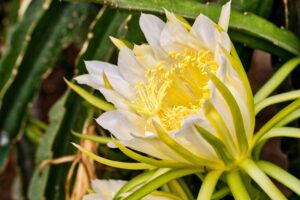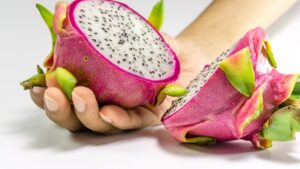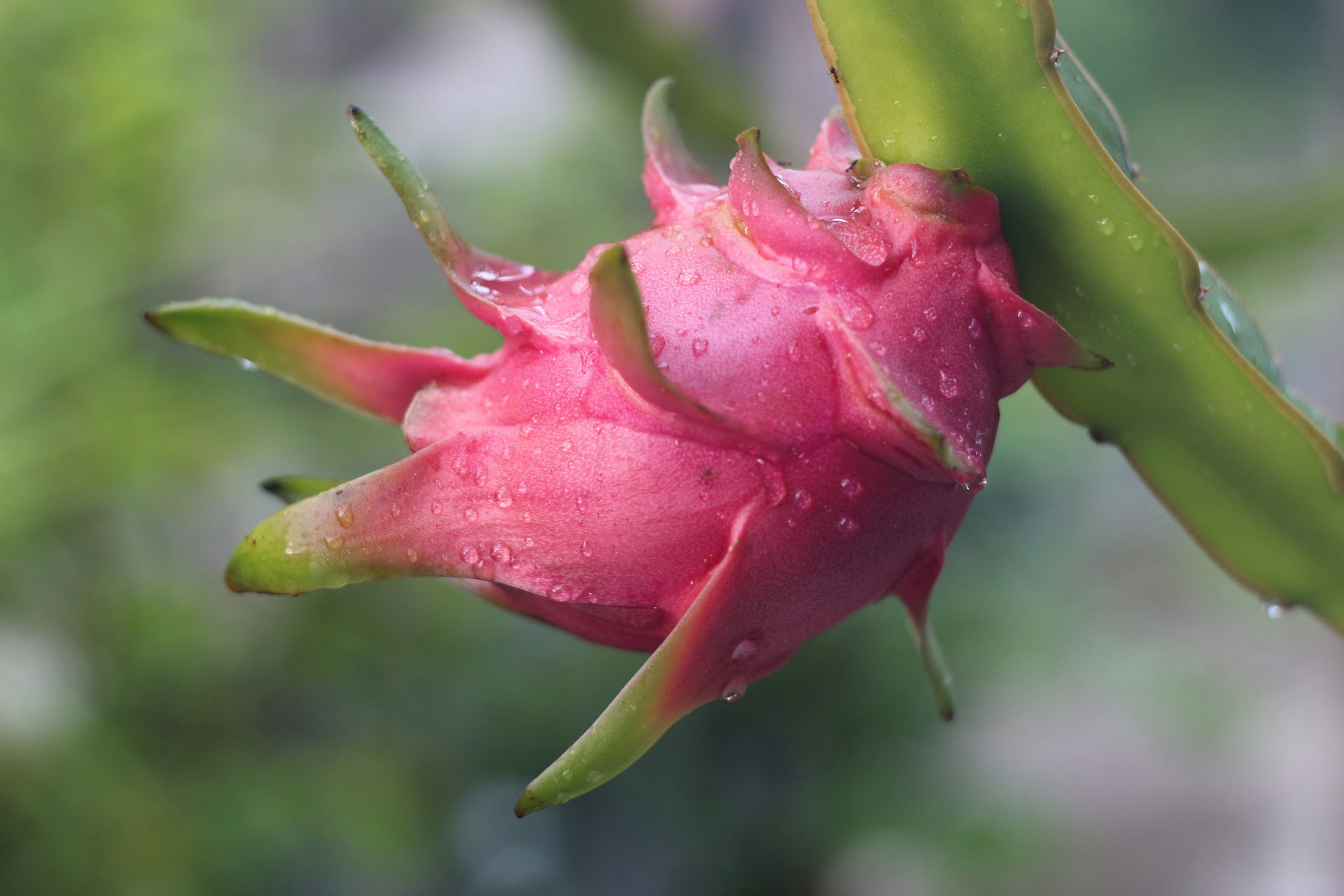The dragon (Hylocereus undatus) fruit is not only a lovely, exotic houseplant that grows quickly, but we can grow dragon fruit indoors, it is also a fruit that can be eaten that is both beautiful and delicious, as well as is a variety of vibrant colors.
Can a dragon fruit be grown indoors?
Yes, you can grow dragon fruit indoors if your house has a sunroom or a big window where the plant can enjoy six to eight hours of direct sunlight daily. It may be necessary to hand-pollinate an indoor dragon fruit cactus in order for it to produce fruit; outdoors, pollination is done by moths, bats, and bees. Many home gardeners are worried about how to grow dragon fruit indoors. Here explained the complete procedure for how to grow dragon fruit indoors.
The vine that bears dragon fruit can reach a height of 20 feet. The cultivars “Edgar’s Baby,” “Alice,” “Seoul Kitchen,” “Yellow Dragon Fruit,” and “Zamorano” are all ideal for growing inside.
How to Grow Dragon Fruit Indoors?
The plant needs assistance to grow upright since it is a climber with aerial roots that emerge from its branches and cling to objects. A trellis is one such support. Make sure it is sturdy and strong enough to hold up the fruit-laden branches, which can become very heavy. The following parameters should keep in mind to grow dragon fruit indoors.
Sunlight
For the development of blooms and fruits, the dragon fruit cactus requires six to eight hours of direct sunlight per day. Ideal sunlight comes from windows facing east in the morning and west in the evening. If your south-facing window is excessively bright, it could scorch the plant, especially during the summer. One solution is to rotate the plant 180 degrees on a regular basis to ensure that it receives equal sun exposure all around.
Synthetic Lighting
You can utilize extra grow lights in addition to the six to eight hours of natural light that are available every day to grow dragon fruit indoors. They should be full-spectrum LED lights to closely resemble bright sunlight. If the plant has been in the shade for a while, such as during shipping, gradually acclimate it to the light. After a few days, move the light closer to the plant by starting out around 30 inches away.
Temperature
A room should be kept at a temperature of 65 to 85 F. The plant should not be kept in rooms that become very hot during the summer because it cannot survive temperatures over 100 F. The dragon fruit can’t stand being frozen. Keep it away from chilly windows in the winter.
Humidity
For the dragon fruit to grow indoors, a room humidity of 30% to 50% is typically sufficient. Place a humidity tray with stones nearby, use a room humidifier, or spritz the plant from above during the heating season in the winter.
Watering
Carefully water the dragon fruit cactus because it is extremely sensitive to overwatering. However, because its phylloclades, which resemble leaves, absorb water, the plant can tolerate some dry conditions. Water when the soil feels dry on top during the summer’s vigorous growing season. Reduce watering during the fall and winter to prevent plant dormancy.
Circulation of Air
The strong growth of the dragon fruit necessitates cutting back and thinning out at least once every year in order to maintain optimum air circulation. It is more susceptible to fungi when there is poor air circulation.
Read About: Vegetables to Grow in Boise Idaho
Fertilizer
The summer season is the only time the dragon fruit thrives, despite being a tropical plant. Use a low-nitrogen fertilizer once a month to fertilize it. Avoiding excessive vegetative growth by not using too much nitrogen.
Pruning and Training
When trimming the plant, the main vines should be reduced to a single stem or a few thicker stems. Additionally, thin out the smaller side branches, as these are where the fruit and flowers will grow. This raises the fruit’s quality and size while also enhancing air circulation.
Pollination
The variety must be manually cross-pollinated with pollen from the blossom of another dragon fruit cactus if it is not self-fertile. To pollinate a plant, gather the pollen from the stamen and gently dab it onto the stigma. Make sure to clean each plant with a brand-new cotton swab. Because the dragon fruit blooms at night, you must pollinate it between nightfall and dawn.

Container and Size
Use a five-gallon container with sufficient drainage holes that is at least 10 to 12 inches deep to grow dragon fruit indoors. The plant is tall. Better than a plastic container is one made of a heavy material like ceramic or terracotta since it is less prone to tumble over.
Aeration and Drainage for Pots
The dragon fruit is simply a cactus in the name when it comes to soil. It should not be planted in cactus soil, which does not contain adequate nutrients, but rather in nutrient-rich, neutral-to-acidic potting soil. You can increase drainage by mixing some sand into the potting soil and filling the container’s bottom with pebbles, stones, or bark.
Repotting a dragon fruit
When a plant seems to have too much root growth, repotting is required. That might happen as soon as a year later, depending on the size of the first container. Since the dragon fruit cactus’ roots are delicate and hairy, additional care must be used when repotting it to prevent root damage. To avoid having to repot the plant repeatedly, it is better to report it straight away in a 25- to 30-gallon container with a depth of 20 to 24 inches if you have the room to allow it to develop to its full size. These simple procedures you can adopt to grow dragon fruit indoors.
Moving Dragon Cactus Fruit Outside for the Summer
You can relocate the plant to a patio, porch, or balcony once all threat of frost has passed and daytime temps are consistently around 70 F. When the daytime temperature falls below 65 degrees Fahrenheit and there is a chance of the first frost, bring the plant back inside. The plant will be harmed by heat in summertime conditions with temperatures over 100 F, and too much sunlight will cause sunburn. Like all outdoor container plants, it needs more frequent watering if it is brought outside for the summer.
What kind of plant pests frequently attack dragon fruit cacti?
The dragon fruit cactus is prone to scale, mealybugs, and aphids, like many indoor plants.
How is the dragon fruit cactus harvested?
For the best flavor, wait until the fruit is a vibrant pink before twisting or cutting it free from the stalk.


[…] How to Grow Dragon Fruit Indoors? […]